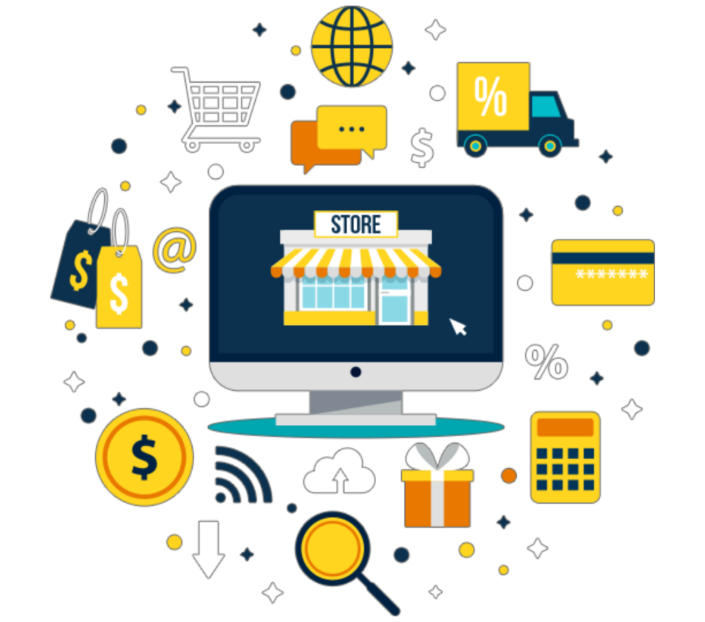E-commerce automation: How to make your online business run like clockwork
Corporate growth is good and essential for the continued existence of a company. But it also promotes more and more complexity, as the number of internal references in the company is growing. The more inhomogeneous the systems in the company are, the greater the effort required for coordination and synchronisation. If no countermeasures are taken, for example by automating processes, complexity will limit the company’s growth.
How does e-commerce automation work?
By defining rules, it is possible to automate certain tasks and adapt them better to your own workflow. Automations can also be combined as required to automate complete workflows. This can be the entire customer communication, but also individual sub-areas, such as automatic invoice dispatch or dispatch notifications.
In e-commerce automation, it is important to create high-performance sales structures and utilise forward-looking functions in order to demonstrably increase conversions and customer loyalty. An ERP system like the one from reybex leads to higher conversions and higher average order values.
Which e-commerce processes can be automated with an ERP system?
It is mainly the manual and therefore time-consuming and error-prone processes that an ERP system can automate. The tools in an ERP simplify processes, reduce costs and lead to better results. Digital core applications include these here:
- Centralised management of all sales channels, including automated order import. Realise multichannel sales and product import management (PIM). The PIM represents the totality of all processes and offers tools with which you can edit and manage data. This makes sense, for example, if you sell your products both in your own shop and via other shops and partner sites.
- The ERP covers order processing from the quotation, order, delivery note and dispatch label through to the returns label and credit note.
- When processing returns via the ERP, you benefit from the automatic creation of returns with a shipping label. The QR code can be sent to customers by e-mail.
- You can also automatically determine your purchasing requirements with a powerful ERP and automatically reorder goods if a previously defined reorder level is not reached.
- Of course, the system can also synchronise stock levels and handle the entire dispatch process.
- For financial accounting, the use of an ERP means up to 70 % less effort for manual postings.
- Your customer support is improved across the board because an integrated ticket system creates the corresponding tickets from e-mails. Customers are automatically informed about the status of processing, which increases customer satisfaction and reduces returns.
Advantages of automation in e-commerce
Above all, automation takes the pressure off your employees, which means that resources are freed up and team satisfaction increases. Both promote productivity and ensure long-term motivation and success.
The frequency of errors during manual data entry is reduced. While the average error rate for manual processes is around 1%, which doesn’t sound like much at first glance, an ERP system can bring significant improvements in data quality. A 1% error rate can account for several hundred errors in the system, which can affect the entire process level. And with calibration processes, just as with quality processes, the effects would not only be massive, but could also be dramatic.
If processes are optimised, this saves time, which is reflected in shorter processing times for orders. Customers want fast and complete deliveries and often rate these services positively or negatively with online retailers. A good opportunity to stand out from the competition and score points with above-average ratings.
Automated lead management and automated communication across all touchpoints enables holistic sales. This is because many functions and features in ERP systems can be controlled and customised automatically. But don’t forget that despite all the automation, the customer always needs to feel that they are being addressed personally and not as a mass audience.
The centralised management of all incoming and outgoing invoices for all online shops and marketplaces as well as the automatic pre-assignment and sending to the accounting department saves an enormous amount of time. However, it also provides a better overview and displays the company’s financial situation in real time.
The holistic approach basically runs through your entire organisation. Efficient and less error-prone processes lead to more efficient workflows in all departments and areas and therefore to greater customer satisfaction.ERP systems can be customised and expanded on a modular basis. The monthly costs are easier for small and medium-sized companies to afford than high ad hoc investment sums.
Automation brings optimisation
Automation is also always a form of optimisation, as modern technologies are used for this purpose. The dynamic market situation primarily affects e-commerce, where complexity is increasing rapidly and intensively. The automation of recurring processes ensures more time, more efficiency and more satisfaction. So what are you waiting for? Test reybex and automate your e-commerce processes!



